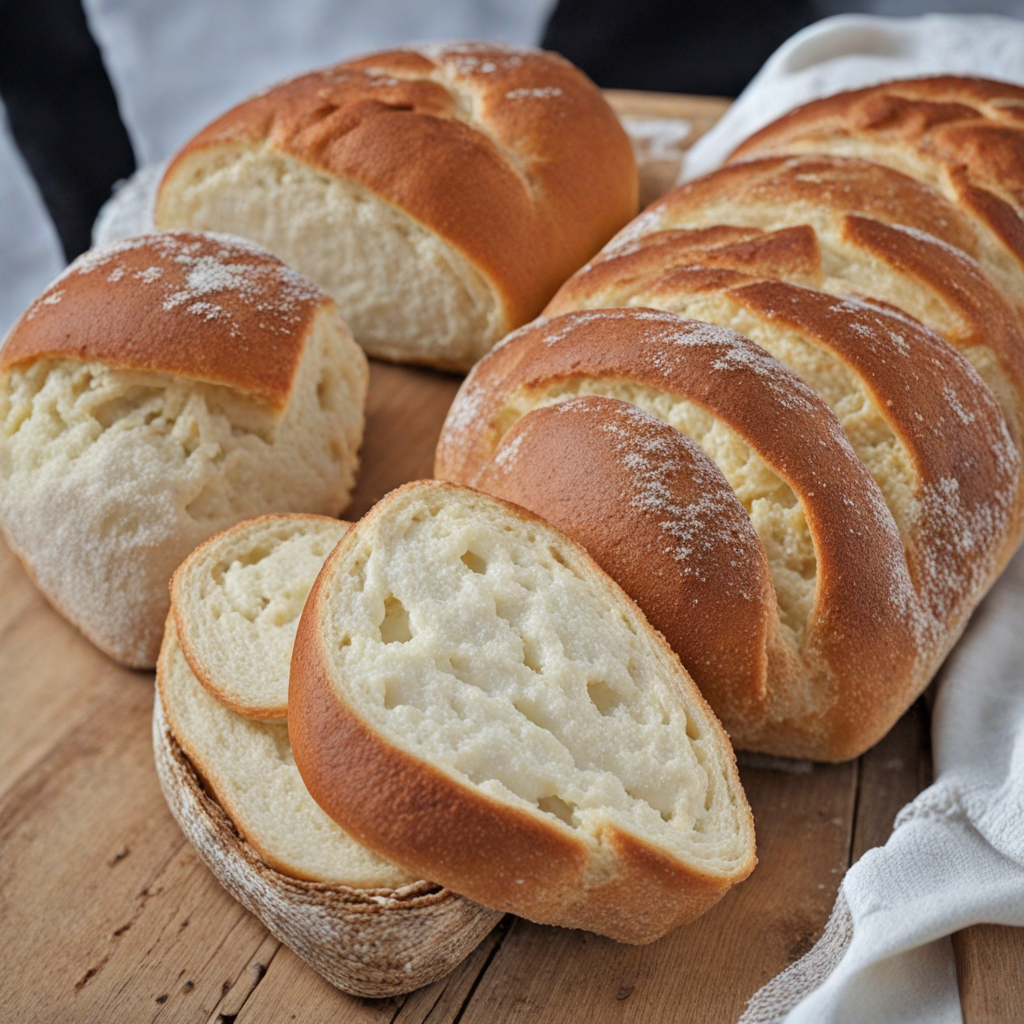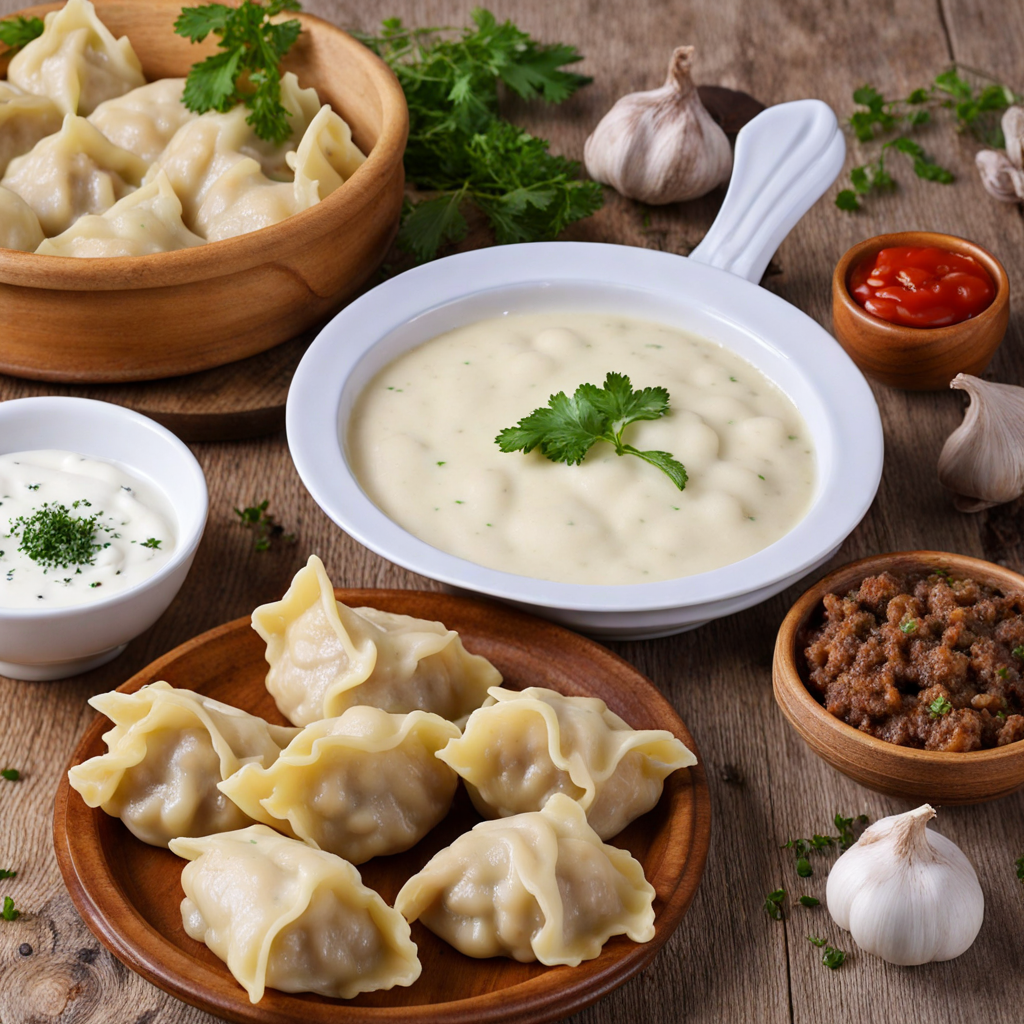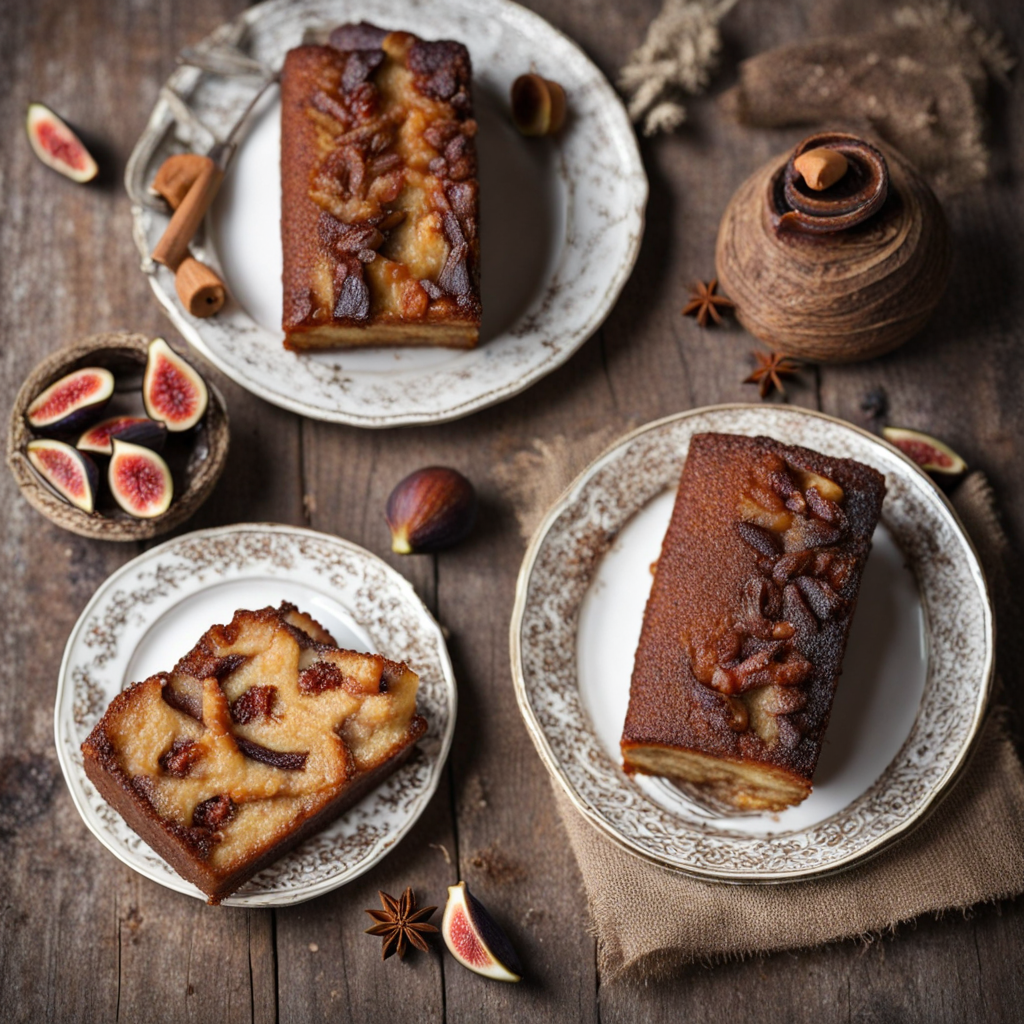Lepinja
Lepinja is a traditional Bosnian flatbread that embodies the heart and soul of Balkan cuisine. With its soft and airy texture, Lepinja is often compared to pita or naan, but it has its own unique character. Made from simple ingredients like flour, water, yeast, and salt, this bread is typically baked in a hot oven, resulting in a slightly crispy exterior while the inside remains fluffy and tender. Its delightful aroma wafts through the air, inviting you to take a bite and experience the comforting flavors that have been cherished for generations. One of the most appealing aspects of Lepinja is its versatility. It can be enjoyed on its own, dipped in olive oil or served with various spreads, but it truly shines when paired with traditional Bosnian dishes. Often used as a wrap for grilled meats like ćevapi (spiced minced meat sausages) or served alongside stews, Lepinja complements the rich and robust flavors of the region's cuisine. The bread's ability to soak up juices and sauces makes every meal a delightful experience, allowing you to savor every last bite. In Bosnia and Herzegovina, Lepinja is more than just food; it is a symbol of hospitality and togetherness. Families and friends gather around the table to share meals, and Lepinja is often a staple at celebrations and gatherings. Its warm, inviting nature makes it a perfect accompaniment to both casual lunches and festive dinners, inviting everyone to partake in the joy of sharing good food. Whether you are enjoying it with a hearty stew or simply tearing off a piece to enjoy with a drizzle of olive oil, Lepinja offers a taste of the rich culinary heritage of Bosnia and Herzegovina that is sure to leave a lasting impression.
How It Became This Dish
The History and Cultural Significance of Лепиња in Bosnia and Herzegovina Introduction: A Taste of Tradition Лепиња (lepina) is more than just a bread; it is a culinary staple that has woven itself into the social and cultural fabric of Bosnia and Herzegovina. This round, flatbread, often characterized by its soft texture and slightly crisp exterior, is cherished not only for its taste but also for its role in traditional Bosnian meals and gatherings. The story of лепиња is a fascinating journey through history, reflecting the influences of various cultures and the importance of bread in Bosnian hospitality. Origins: The Bread of the Balkans The origins of лепиња can be traced back to the broader history of bread-making in the Balkans, which has been influenced by various civilizations and migrations over millennia. The region’s geography, diverse ethnic groups, and historical events have all played a crucial role in shaping its culinary practices. Flatbreads like лепиња are believed to have been made for thousands of years, with early variations found in ancient civilizations. The word “lepina” itself is derived from the Slavic word “lepa,” meaning “beautiful,” which reflects the aesthetic appreciation for this type of bread. The bread's simple ingredients—flour, water, salt, and yeast—are a testament to the resourcefulness of the Bosnian people, who have used locally available materials to create sustenance. Cultural Significance: More Than Just Food In Bosnia and Herzegovina, лепиња is not merely a side dish; it is an integral part of the meal, often served with traditional dishes such as ćevapi (grilled minced meat), sarma (cabbage rolls), and various stews. The bread acts as a vessel, allowing diners to scoop up food or wrap it around fillings, making it a practical and versatile component of everyday meals. The making and sharing of лепиња hold significant cultural value. In many Bosnian households, bread-making is a communal activity, often involving family members coming together to knead the dough and bake it in an oven. This ritual not only fosters a sense of community but also passes down culinary traditions from one generation to the next. The act of breaking bread together symbolizes unity and friendship, making лепиња a centerpiece in celebrations, religious gatherings, and family feasts. Development Over Time: From Tradition to Modernity As Bosnia and Herzegovina navigated its complex history, particularly during the Ottoman Empire, Austro-Hungarian rule, and the Yugoslav era, the recipe and preparation of лепиња underwent several transformations. Under Ottoman influence, the use of spices and the incorporation of diverse ingredients began to enrich the local cuisine. This era saw the introduction of various types of flour and leavening agents, allowing for the development of different textures and flavors in лепиња. With the arrival of the Austro-Hungarian Empire in the late 19th century, new baking techniques and equipment were introduced. This period saw the rise of bakeries and the commercialization of bread production, leading to variations of лепиња that became available to a broader population. As more people moved into urban areas, the demand for ready-made bread grew, leading to the establishment of bakeries that specialized in traditional Bosnian breads. The turbulent 20th century brought significant changes to Bosnia and Herzegovina's culinary landscape. The conflicts of the 1990s, part of the breakup of Yugoslavia, led to economic hardship and a resurgence of interest in traditional foods as symbols of cultural identity. People turned to home-cooked meals and traditional recipes as a way to reconnect with their heritage. Лепиња, in particular, became emblematic of resilience and a return to roots, as families sought comfort in familiar tastes. Modern Interpretations: A Bread for All Seasons Today, лепиња remains a beloved staple in Bosnia and Herzegovina and has gained popularity beyond its borders. As the diaspora has spread across the globe, so too has the appreciation for this traditional bread. In cities with Bosnian communities, such as Vienna, Chicago, and Toronto, you can find bakeries specializing in лепиња and other Bosnian delicacies, catering to both locals and those seeking a taste of home. Modern chefs and food enthusiasts have also begun to experiment with лепиња, incorporating it into contemporary dishes while respecting its traditional roots. Some have introduced variations that include whole grains or seeds, while others have paired лепиња with international flavors, showcasing its versatility and adaptability. Moreover, the rise of food tourism has highlighted лепиња as part of the Bosnian culinary heritage. Tourists seeking authentic experiences are increasingly drawn to local eateries that feature traditional dishes, with лепиња often taking center stage. Cooking classes and food tours centered around traditional Bosnian cuisine emphasize the importance of bread-making, allowing visitors to engage with the culture on a personal level. Conclusion: A Symbol of Heritage and Community Лепиња is more than just a type of bread; it is a symbol of the rich cultural heritage of Bosnia and Herzegovina. It represents the country’s history, resilience, and the communal spirit that defines Bosnian society. From its humble origins to its modern interpretations, лепиња continues to evolve while remaining a cherished food that brings people together. As Bosnia and Herzegovina embraces its culinary past and looks toward the future, лепиња will undoubtedly remain a beloved staple, a testament to the enduring power of food to connect us to our roots, our communities, and each other. Whether enjoyed in a bustling café or a family gathering, лепиња embodies the spirit of hospitality and tradition, making it an eternal favorite on the Bosnian table.
You may like
Discover local flavors from Bosnia And Herzegovina







